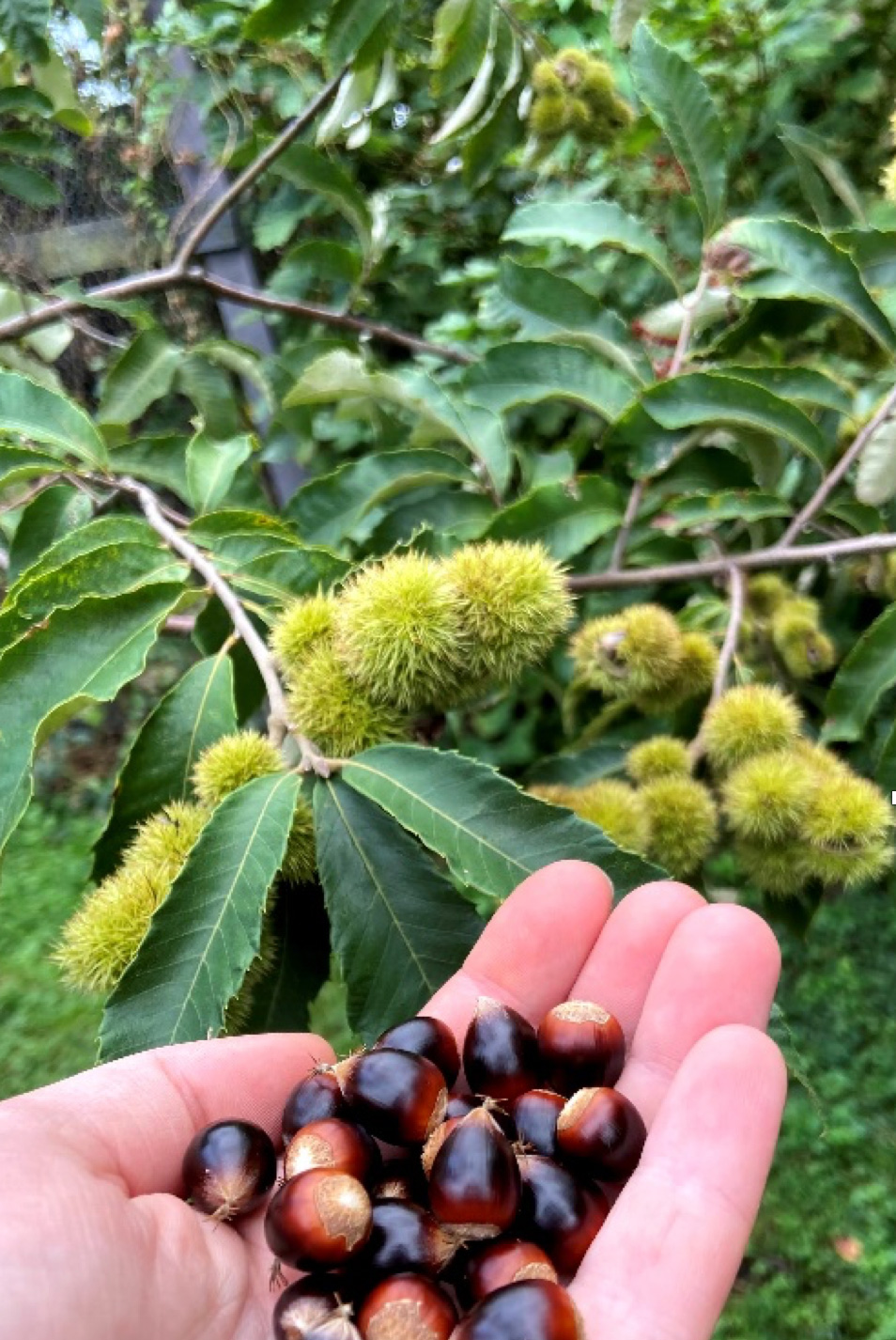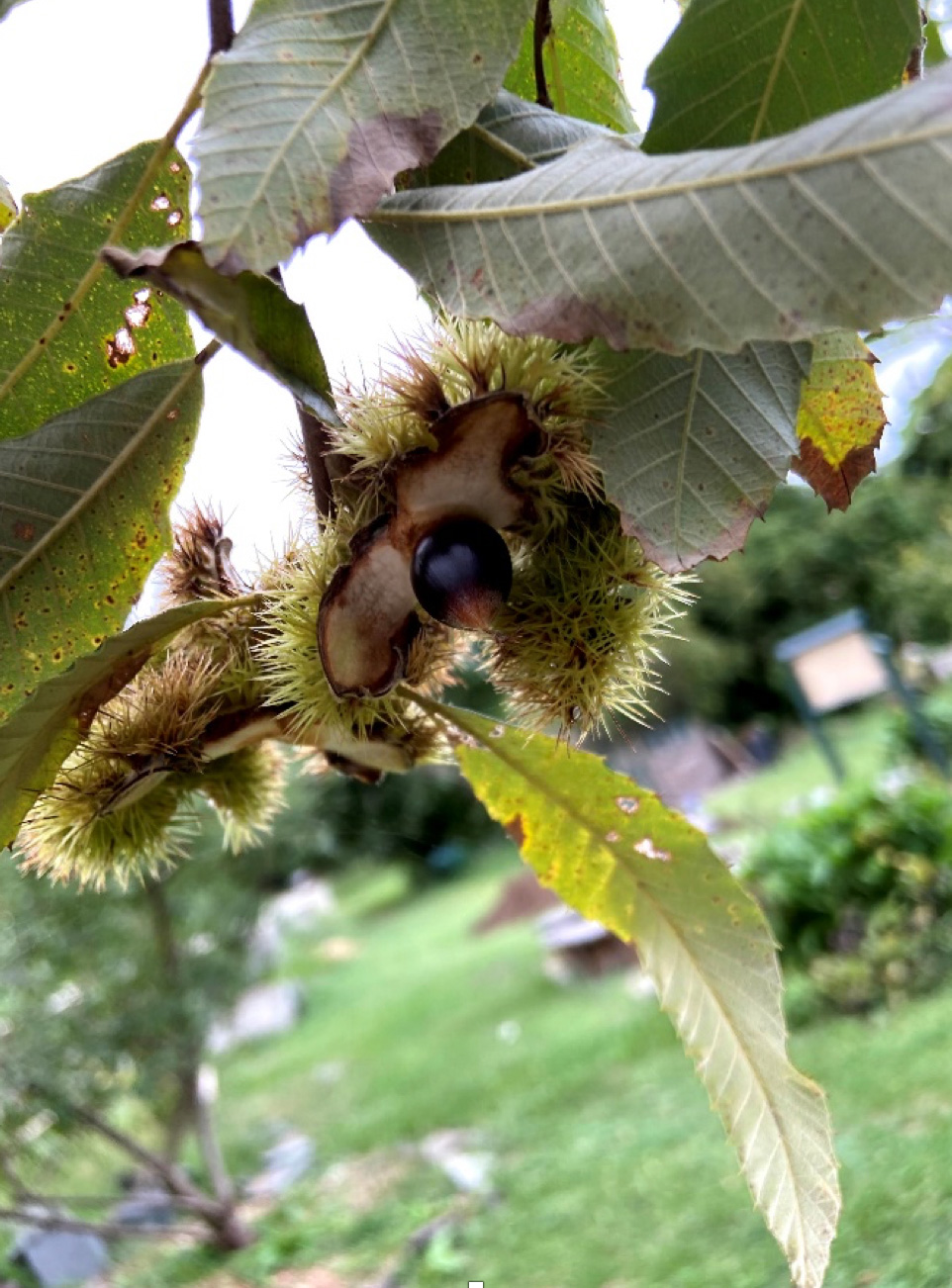Chinquapin
The chinkapin is a rare but incredible plant native to the southeastern United States. It is a very underrated plant and should be cultivated and appreciated more often.
Scientific Name: Castanea pumila
Common Name: Alleghany chinkapin or chinquapin
Plant Family: Fagaceae (Beech family)
Etymology: Chinkapin comes from the Algonquian word “chechinquamin,” which was the original name for this native plant.
Indigenous Uses
Many indigenous peoples used the plant solely as a source of food, while a few groups seemed to use the plant medicinally as an analgesic; “brittle leaves heated and blown on patient for headaches,” infusion used for treatment of blisters, fevers, chills (Cherokee, NAEB). Decoction of roots used as gastrointestinal aid (Koasati, NAEB).
Medicinal Uses
None found at this time.
Edible Parts
The only edible part of this plant is the seed/nut. High amounts of tannins render the rest of the plant inedible.
Gathering and Using
In late September to early October is the best time to harvest the nuts. Because the outer casing of the shell is spiny, it's good to wear gloves. A method Jo Perkins found worked well was collecting the nuts by using the firm corner of manilla envelope, and scooping them out of the spiny casing so that they fall right into the envelope!
Permaculture Functions and Considerations
One of the greatest things about chinquapins is that they are resistant to chestnut blight! They're extremely tasty and provide habitat for many insects, pollinating and otherwise. Habitat Native to North America, Allegheny chinquapins can be found on the Southeastern half of the US.
How to Identify
Chinkapins are often shrubby trees that aren't more than 15 feet in height. They are easily identified by their oblong, toothed leaves and round, spiny nut cases. The nuts are a deep brown and are harvested once the spiny cases open.
Wildlife Support
From my own observations, many insects take shelter in the spiny nutshells as they offer protection from birds and other insectivores. In doing research, there isn't a lot to say that chinquapins have any value to supporting wildlife; however, I'd like to disagree as I have seen many pollinators, spiders, and other important insects use the chinquapin as shelter and food. It would be interesting to see more research done on this aspect of the chinquapin plant.
Additional Information
Ozark chinquapins are very similar to Allegheny chinquapins, the only difference being range and size. Allegheny chinquapins are smaller than their central/midwest US cousins.

Sources
- Dirr, Michael A. Dirr's Encyclopedia of Trees and Shrubs, Timber Press, 2017.
- Moerman, Daniel E. Native American Ethnobotany. Timber Press, 2010.
Web Sources
- https://www.etymonline.com/word/chinkapin
- “Castanea, castanae.” Latin Dictionary and Grammar Resources.
- “Castanea pumila.” Native American Ethnobotany Database.
- “Castanea pumila.” North Carolina State Extension.
- “Chinquapin Chestnut as a Productive Food Crop.” Experimental Farm Network.
- “Forest Gardens.” My Urban Gardener.
- “The Meaning of Latin Plant Names.” The Seed Site.
